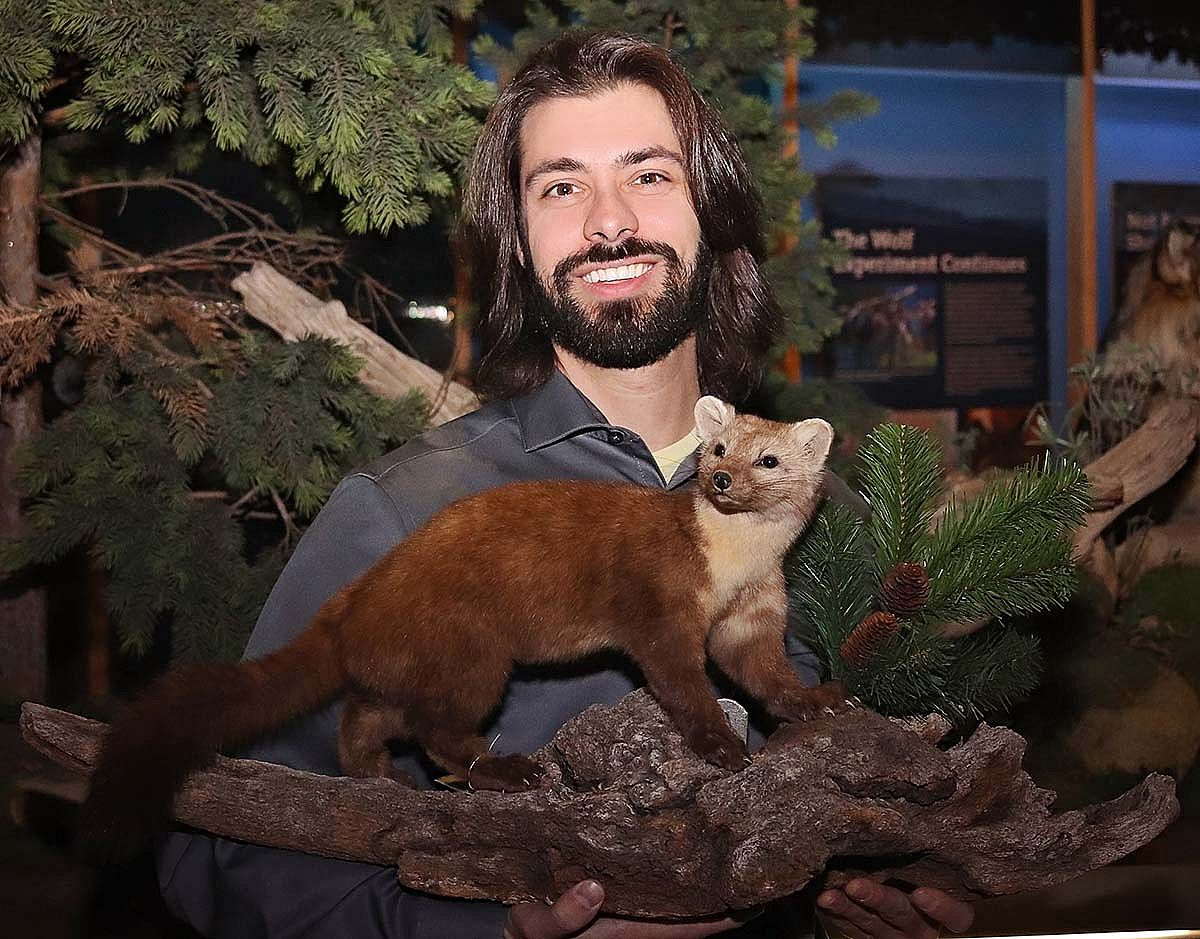
Center of the West appoints new curator of the Draper Natural History Museum
Corey Anco has been promoted to Willis McDonald, IV Curator of Natural Science for the Draper Natural History Museum at the Buffalo Bill Center of the West. He previously served under the founding Curator, Dr. Charles Preston, and then Curator Nathan Doerr, as Assistant and then Interim Curator.
Anco received his Master of Science degree from the Fordham University Graduate School of Arts and Sciences, his Master of Environmental Management degree from Duke University’s Nicholas School of the Environment, and his Bachelor of Science from Lewis University.
Anco co-authored two studies, “Historical Mitochondrial Diversity in African Leopards revealed by archival museum species,” and “Leopard (Panthera pardus) status, distribution, and the research efforts across its range.” His past research draws on genetic variation in museum collections while current research examines relationships between species and ecosystems in the Greater Yellowstone Ecosystem. He and three other scientists have recently launched an ambitious pilot research program to monitor for bats in alpine ecosystems, and Anco now stewards the “Monarch of the Skies” exhibition, which focuses on golden eagles in Wyoming’s Bighorn Basin and their inherent relationship with people and the landscape.
Regarding his new role in Cody as Curator, Anco stated “The Draper Natural History Museum at the Buffalo Bill Center of the West is the primary source institution for knowledge of the biodiversity, ecosystems, and the processes that shape both in the Greater Yellowstone Ecosystem. I am thrilled to continue the research, field, and lab work that enriches and engages all our visitors, including the scientific community, on their way to and from nearby Yellowstone National Park. The Draper provides our guests with an opportunity to get up close and personal with a side of the park they might not get to see on any given day. Cody is situated in the eastern Greater Yellowstone Ecosystem and is an outdoor enthusiast’s paradise. I have found no better medicine in this world than these trails beneath my soles.”
Anco, grateful for the work of his team of volunteers, adds, “The Draper is unparalleled in its world-class access to nature and breadth of active programs. Without our team of dedicated volunteers, the Draper would not be able to accomplish nearly as much with regards to our specimen collection, educational programs, and field research. Volunteers are critical to our operations, education, and outreach. They are part of the team.” In addition to launching novel research projects, Anco plans to expand programming for both youth and adults alike, catering certain experiences specifically for those groups in meaningful and memorable ways.
The Draper is the only institution of its kind focusing on the wildlife and ecosystems of the Greater Yellowstone Area.
The objects and displays can be appreciated alongside the Center’s four other museums and research library, including the Cody Firearms Museum, Whitney Western Art Museum, Buffalo Bill Museum, Plains Indian Museum, and the McCracken Research Library, each related to the history of the American West.
In closing, Anco added, “Natural history museums offer so much more than meets the eye. There is always behind-the-scenes work going on at any given moment in the Draper. Producing hands-on experiences for all ages will ensure the Draper remains a must-stop for visitors on their way to and from Yellowstone for years to come.”
Written By
Nancy McClure
Nancy now does Grants & Foundations Relations for the Center of the West's Development Department, but was formerly the Content Producer for the Center's Public Relations Department, where her work included writing and updating website content, publicizing events, copy editing, working with images, and producing the e-newsletter Western Wire. Her current job is seeking and applying for funding from government grants and private foundations. In her spare time, Nancy enjoys photography, reading, flower gardening, and playing the flute.








